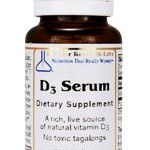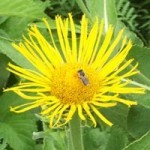About alberto de leon(Health & Nutrition)vox-a13 http://www.gurumaa.com/content/papaya-a-powerhouse-of-nutrients.html .............................................................................................................................................................................................................................................................................................................................................................................................................................................................................................................................................................................................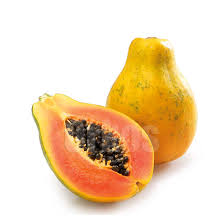
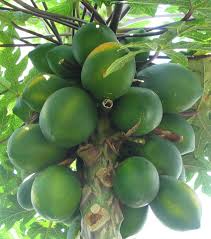 ............................................................................................................................................................
............................................................................................................................................................
................................................................................................................................................http://www.traditionaloven.com/articles/124/papaya-sweet-pawpaw-answer-to-well-being-and-health ................................................................................................................................................
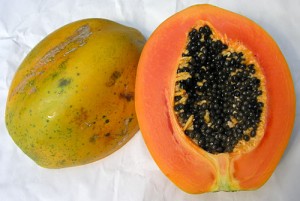 Just recently I came across an eye opening book by Barry Thomson “Join Our Escape From Death Row-Cancer Jail”, where he in a most genuine and generous ways shares valuable information and his knowledge in effective fight against cancer and ill health. Among other very interesting information I red about simple but wonderful papaya and its healing properties. One chapter in this book awoke in me more desire to learn and research as much as I possibly could as on a professional level I deal with people suffering many different health issues and aliments who look for alternative ways to help them. I would love to share what I know as I believe it can make difference in everyday life of many others. I am also hoping that this will prompt other people to share their knowledge about improving our general well being and health. (this book is further described in comment #100 below)
Just recently I came across an eye opening book by Barry Thomson “Join Our Escape From Death Row-Cancer Jail”, where he in a most genuine and generous ways shares valuable information and his knowledge in effective fight against cancer and ill health. Among other very interesting information I red about simple but wonderful papaya and its healing properties. One chapter in this book awoke in me more desire to learn and research as much as I possibly could as on a professional level I deal with people suffering many different health issues and aliments who look for alternative ways to help them. I would love to share what I know as I believe it can make difference in everyday life of many others. I am also hoping that this will prompt other people to share their knowledge about improving our general well being and health. (this book is further described in comment #100 below)
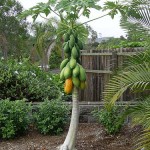 PawPaw tree. Paw paw is rich in enzymes called papain and chymopapain which helps with the digestion, particularly it breaks down the proteins from the food we eat into amino acids. The latest research shows that amino acids are responsible for all what is happening in our organism, basically for what is happening in every chemical reaction as well as our mental and physical health. As we age we produce less of the digestive enzymes in our stomach and pancreas, which leads to ineffective digestion of proteins. Due to this we end up with excess amount of undigested protein, which leads to overgrowth of the bad bacteria in our gastrointestinal system and not enough of amino acids to perform all important chemical reactions. We can say that good quality protein is absolutely essential for our healthy being. This is where the papaya enzymes can be very beneficial.
PawPaw tree. Paw paw is rich in enzymes called papain and chymopapain which helps with the digestion, particularly it breaks down the proteins from the food we eat into amino acids. The latest research shows that amino acids are responsible for all what is happening in our organism, basically for what is happening in every chemical reaction as well as our mental and physical health. As we age we produce less of the digestive enzymes in our stomach and pancreas, which leads to ineffective digestion of proteins. Due to this we end up with excess amount of undigested protein, which leads to overgrowth of the bad bacteria in our gastrointestinal system and not enough of amino acids to perform all important chemical reactions. We can say that good quality protein is absolutely essential for our healthy being. This is where the papaya enzymes can be very beneficial.
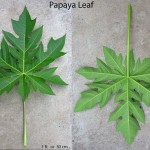 The papain enzymes are produced in the skinny peel of paw paw. The combination of these enzymes repels insect during the ripening, without this protection paw paw fruit would not survive. Eating paw paw after a meal makes for better digestion, prevents bloating and chronic indigestion. It can also lower the inflammation in the body, alleviates the pain and edema caused by sport injuries. Because of its anti-inflammatory properties papaya can relieve the severity of Rheumatoid arthritis and osteoarthritis. Because of its high antioxidant content, papaya can prevent cholesterol oxidation and can be use in a preventative treatments against atherosclerosis, strokes, heart attacks and diabetic heart disease.
Robert’s The Tree of Life Papaya and Papaya for true health to time indefinite articles ...................................................................................................................................................................................................................................................................................................................................................................................................................
The papain enzymes are produced in the skinny peel of paw paw. The combination of these enzymes repels insect during the ripening, without this protection paw paw fruit would not survive. Eating paw paw after a meal makes for better digestion, prevents bloating and chronic indigestion. It can also lower the inflammation in the body, alleviates the pain and edema caused by sport injuries. Because of its anti-inflammatory properties papaya can relieve the severity of Rheumatoid arthritis and osteoarthritis. Because of its high antioxidant content, papaya can prevent cholesterol oxidation and can be use in a preventative treatments against atherosclerosis, strokes, heart attacks and diabetic heart disease.
Robert’s The Tree of Life Papaya and Papaya for true health to time indefinite articles ...................................................................................................................................................................................................................................................................................................................................................................................................................
Papaya - A Powerhouse of Nutrients!
The health benefits of fruits and vegetables can not be equated to that promised by nutritional pills and supplements. Nutrition experts advocate generous intake of fruits for optimum health as these food items are loaded with all the benefits. Fruits are goldmine of vitamins, minerals and fibre and are ideal to consume at least 4-5 servings in a day. Since they are in the natural form, account for largest part of water and 100% bad cholesterol free, it’s much easier for the body to process and absorb the vitamins and minerals from the fresh fruit.
Yellow and orange fruits and vegetables contain varying amounts of antioxidants such as vitamin C as well as carotenoids and bioflavonoids, two classes of phytochemicals that scientists are studying extensively for their health-promoting potential. In addition, a new scientific base is emerging to support a protective role for this group of fruits and vegetables in prevention of cataract formation, chronic obstructive pulmonary disease, diverticulosis, and possibly, hypertension.
“Papaya” is recommended to be one such pick from the group of yellow and orange fruits, which promises abundant health benefits. It is a melon like fruit with yellow- orange flesh with dozens of small black seeds enclosed in skin that ranges in color from green to orange. Papaya has high nutritional benefits. .. It is rich in anti-oxidants, the B vitamins, folate and pantothenic acid; and the minerals, potassium and magnesium; and fiber. Together, “these nutrients promote the health of the cardiovascular system and also provide protection against colon cancer.” In addition, papaya contains the digestive enzyme, papain, which is used like bromelain, a similar enzyme found in pineapple, to treat sports injuries, other causes of trauma, and allergies. Vitamin C and vitamin A, which is made in the body from the beta-carotene in papaya, are both needed for the proper function of a healthy immune system. Papaya may therefore be a healthy fruit choice for preventing such illnesses as recurrent ear infections, colds and flu.
This highly loved tropical fruit was reputably called “The Fruit of the Angels” by Christopher Columbus. In the 20th century, papayas were brought to the United States and have been cultivated in Hawaii, the major U.S. producer since the 1920s. Today, the largest commercial producers of papayas include the United States, Mexico and Puerto Rico.
Gluten refers to a group of proteins that are difficult for humans to digest. One group of proteins called gliadin is thought to do most of the damage to the intestinal lining. Glutenins are another group of proteins found in gluten and thought to be associated with autoimmune skin diseases and asthma. Gluten proteins are extremely resistant to intestinal digestion, despite grinding, cooking, processing and digestion.
Nutritive value of Papaya : Per 100 gm.
 VITAMINS
VITAMINS
o Vitamin A : 1,750 I.U
o Vitamin B : Thiamine 0.03 mg.
o Riboflavin : 0.04 mg.
o Niacin : 0.3 mg.
o Vitamin C : 56 mg.
o Also contains Vitamin E and K.
o Vitamin B : Thiamine 0.03 mg.
o Riboflavin : 0.04 mg.
o Niacin : 0.3 mg.
o Vitamin C : 56 mg.
o Also contains Vitamin E and K.
- MINERALS
o Calcium : 20 mg.
o Iron : 0.3 mg.
o Phosphorus: 16 mg.
o Potassium : 470 mg.
o Iron : 0.3 mg.
o Phosphorus: 16 mg.
o Potassium : 470 mg.
- FAT : 0.1 gm.
- CAROHYDRATES : 10gm.
- PROTEIN : 0.6gm.
- CALORIES : 39
Reported Health Benefits of Papaya
- Papaya contains the digestive enzyme papain and therefore valuable for aiding digestion.
- The unique protein-digesting enzymes; papain and chymopapain have been shown to help lower inflammation and to improve healing from burns in addition to helping in digestion of proteins. The antioxidant nutrients found in papaya, including vitamin C, vitamin E, and beta-carotene, are also very good at reducing inflammation.
- The ripe fruit is easily digestible and prevents constipation.
- Case studies indicate that this food taken alone for two or three days has a highly beneficial tonic effect upon the stomach and intestines.
- The juice of the papaya aids in relieving infections of the colon and has a tendency to break down pus and mucus reached by the juice.
- May help prevent cancer in organs and glands with epithelial tissue (ripe papaya). Papaya’s fiber is able to bind to cancer-causing toxins in the colon and keep them away from the healthy colon cells. In addition, papaya’s folate, vitamin C, beta-carotene, and vitamin E have each been associated with a reduced risk of colon cancer
- Prevents nausea (includes morning sickness and motion sickness)
- The seeds are antihelmintic, for expelling worms and they are given with honey. Chew and swallow two teaspoonfuls of seeds after each principal meal (three times a day).
- Papayas may be very helpful for the prevention of atherosclerosis and diabetic heart disease. Papayas are an excellent source of vitamin C as well as a good source of vitamin E and vitamin A (through their concentration of pro-vitamin A carotenoid phytonutrients), three very powerful antioxidants.
- Papayas are also a good source of fiber, which has been shown to lower high cholesterol levels.
Papaya Sweet Answer to our Well Being and Health
 Just recently I came across an eye opening book by Barry Thomson “Join Our Escape From Death Row-Cancer Jail”, where he in a most genuine and generous ways shares valuable information and his knowledge in effective fight against cancer and ill health. Among other very interesting information I red about simple but wonderful papaya and its healing properties. One chapter in this book awoke in me more desire to learn and research as much as I possibly could as on a professional level I deal with people suffering many different health issues and aliments who look for alternative ways to help them. I would love to share what I know as I believe it can make difference in everyday life of many others. I am also hoping that this will prompt other people to share their knowledge about improving our general well being and health. (this book is further described in comment #100 below)
Just recently I came across an eye opening book by Barry Thomson “Join Our Escape From Death Row-Cancer Jail”, where he in a most genuine and generous ways shares valuable information and his knowledge in effective fight against cancer and ill health. Among other very interesting information I red about simple but wonderful papaya and its healing properties. One chapter in this book awoke in me more desire to learn and research as much as I possibly could as on a professional level I deal with people suffering many different health issues and aliments who look for alternative ways to help them. I would love to share what I know as I believe it can make difference in everyday life of many others. I am also hoping that this will prompt other people to share their knowledge about improving our general well being and health. (this book is further described in comment #100 below)
Papaya, Paw Paw, Papaw, Tree Melon (botanical name Carica Papaya), it has oblong shape, normally greenish yellow, yellow or orange color. It is a large tree plant fruit usually reaching 2.5kg. It has bitter sweet taste and comes from tropical places with higher humidity, native to Mexico, countries of Central America, Thailand, Africa and Asia and growing well in Australia.
Papaya Health Benefits
Paw Paw how we call it here in Australia is these days plentiful all year round in most of the countries. The parts that are used medicinally are fruit, seeds, stems and leaves. I did look around and found out you can buy paw paw in all forms, in a form of fermented papaya, herbal teas even tablets and of course plenty of the fresh fruit, which can be eaten as it is or in a form of juice. So you ask what are these awesome healing properties of paw paw? Well where do I start? Papaya fruit is and excellent source of dietary fiber, folate, vitamin A, C and E. It also contains small amount of calcium, iron, riboflavin, thiamine and niacine. It is also very rich in antioxidant nutrients flavonoids and carotenes, very high in vitamin C plus A, and low in calories and sodium.
 PawPaw tree. Paw paw is rich in enzymes called papain and chymopapain which helps with the digestion, particularly it breaks down the proteins from the food we eat into amino acids. The latest research shows that amino acids are responsible for all what is happening in our organism, basically for what is happening in every chemical reaction as well as our mental and physical health. As we age we produce less of the digestive enzymes in our stomach and pancreas, which leads to ineffective digestion of proteins. Due to this we end up with excess amount of undigested protein, which leads to overgrowth of the bad bacteria in our gastrointestinal system and not enough of amino acids to perform all important chemical reactions. We can say that good quality protein is absolutely essential for our healthy being. This is where the papaya enzymes can be very beneficial.
PawPaw tree. Paw paw is rich in enzymes called papain and chymopapain which helps with the digestion, particularly it breaks down the proteins from the food we eat into amino acids. The latest research shows that amino acids are responsible for all what is happening in our organism, basically for what is happening in every chemical reaction as well as our mental and physical health. As we age we produce less of the digestive enzymes in our stomach and pancreas, which leads to ineffective digestion of proteins. Due to this we end up with excess amount of undigested protein, which leads to overgrowth of the bad bacteria in our gastrointestinal system and not enough of amino acids to perform all important chemical reactions. We can say that good quality protein is absolutely essential for our healthy being. This is where the papaya enzymes can be very beneficial. The papain enzymes are produced in the skinny peel of paw paw. The combination of these enzymes repels insect during the ripening, without this protection paw paw fruit would not survive. Eating paw paw after a meal makes for better digestion, prevents bloating and chronic indigestion. It can also lower the inflammation in the body, alleviates the pain and edema caused by sport injuries. Because of its anti-inflammatory properties papaya can relieve the severity of Rheumatoid arthritis and osteoarthritis. Because of its high antioxidant content, papaya can prevent cholesterol oxidation and can be use in a preventative treatments against atherosclerosis, strokes, heart attacks and diabetic heart disease.
The papain enzymes are produced in the skinny peel of paw paw. The combination of these enzymes repels insect during the ripening, without this protection paw paw fruit would not survive. Eating paw paw after a meal makes for better digestion, prevents bloating and chronic indigestion. It can also lower the inflammation in the body, alleviates the pain and edema caused by sport injuries. Because of its anti-inflammatory properties papaya can relieve the severity of Rheumatoid arthritis and osteoarthritis. Because of its high antioxidant content, papaya can prevent cholesterol oxidation and can be use in a preventative treatments against atherosclerosis, strokes, heart attacks and diabetic heart disease.
In a everyday health papaya works magic on strengthening the immune system preventing the recurrent colds and flu. After treatment with antibiotics eating paw paw or drinking its juice replenishes the good intestinal bacteria, which was destroyed by the antibiotic treatment. The latest good news from eating paw paw comes down once again to papain the enzyme which I talked about, it was found to destroy intestinal parasites. Papain is proteolitic enzyme, which means that it digests inert (non-living) proteins. Intestinal parasites are largely protein, the papain attacks it and causes parasite to die. Also, home applications of leaf and bark papaya extract is used to deal with mouth gums and toothaches which is being effectively practised in many cultures around the world.
Papaya Research and Products
Papain is also being studied for relief of cancer therapy side effects, especially relieving side effects such as difficulty swallowing and mouth sores after radiation and chemotherapy as well as boosting up the immune system and helping body to fight the cancer. I am big fan of the products made by Rochway, Australian company (for more information visit rochway.com.au) as they use organically grown papaya, producing among other products, product called Papaya35, fermented papaya enzymes. They also produce Blueberry and PawPaw probiotic Punch, which has very strong antioxidant properties that protects against free radicals. Free radicals contribute largely in many diseases such as diabetes, Parkinson’s, Alzheimer’s and cancer. Rochway products are 99% sugar free which makes them suitable for people suffering diabetes as well. As you can see there is plenty we can benefit from this simple fruit, more and more research is being done and I can’t wait to hear more about it.
For references and more on the current studies you can look up PubMed Gov. ( searchwww.ncbi.nlm.nih.gov/pubmed/ ) as for the products there are few available on the market. I am sure if you look around you will be able to find many available or simply stick with the fresh fruit. However if you are looking or hoping for more therapeutic effect of eating papaya, you need to be aware the unripened papaya (still green papaya) contains far more of the proteolytic enzymes papain and chymopapain than ripened papaya which we commonly eat. You can also juice the leaves and stems but be prepared for the vile taste of it …. you can’t naturally like its taste nor does the cancer cells.
Summary of Healing Properties of Papaya
- Increases quality of proteins in whole organism.
- Revitalize the human body and maintain energy and vitality.
- Encourages the renewal of muscle tissue.
- Supports cardiovascular system.
- Boosts up the immune system.
- Helps with the digestive system, by breaking down the proteins and supporting production of digestive enzymes.
- Papaya can be use also externally as a treatment for skin wounds that don’t heal quickly, for this you can use papaya peel or ointments made out of papaya.
- Prevents the cataract formation.
- Due to high vitamin A, it lowers the risk of emphysema in smokers and passive smokers.
- Alleviates inflammation.
- Helps with the nausea and constipation.
- Can benefit people suffering colon cancer and other forms of cancers and aliments of cardiovascular and gastrointestinal systems.
I would absolutely love new info on papaya and I would love to hear from any one who used it to improve their health.
Mrs. Green’s next article on: Omega-3 in fish oil liquid for health.
© Copyright statement – KangaRado Hand ® All rights reserved.
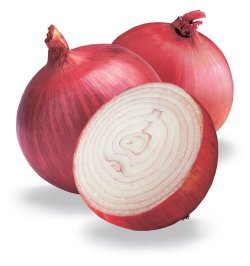
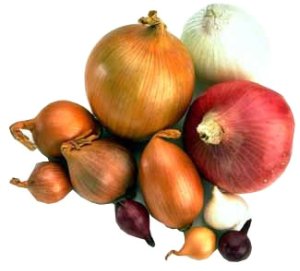
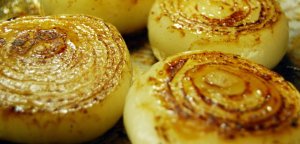
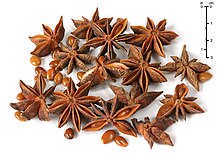

 Email
Email


